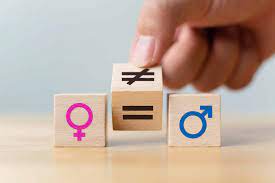Australia’s Gender Pay Gap Law
Australia has recently passed a new law aimed at addressing the gender pay gap in the country. The law requires companies with over 100 employees to reveal their gender pay gaps, a move towards transparency that is expected to make businesses accountable for their actions. The new law, which takes effect early next year, will require the Workplace Gender Equality Agency (WGEA) to publicly publish details of companies’ gender pay gaps.
The Need for Transparency
Until now, companies were required to report income inequality to the WGEA, which publishes the information by industry. However, the agency did not have the power to publicly publish details of company. The new federal laws mandate the agency to release data for private businesses from early 2024 and for Commonwealth public sector employees from 2025. This move towards transparency is expected to help jobseekers get a clearer indication of a prospective employer’s commitment to ensuring the contributions of all employees are equally valued and rewarded.
The Impact of the Gender Pay Gap
The gender pay gap in Australia has been a significant issue for years, with women earning 87 cents on average for every dollar men earn. According to the official figures, in 2023, the gender pay gap in the country was 13.3%. The average weekly ordinary full-time earnings across all industries and occupations were AUD 1,653.60, which was AUD 253.50 less than the average of male counterparts. The gap was wider in the private sector, where women earned even less than in the public sector.
The Importance of the New Law
The new legislation is an important step towards improving the economic security of women in Australia. The country’s Sex Discrimination Commissioner Kate Jenkins has stated that the change will play an important role in encouraging business, industry, and government to be more active in their efforts to reduce the gender pay gap. The law seeks to promote workplace equality in Australia, where the pay gap between men and women is higher than the OECD average of 11.9%.
Other Measures to Address the Gender Pay Gap
The Australian government has also passed a law to increase paid parental leave from 18 to 26 weeks, shared between both parents. These measures are aimed at furthering workplace equality in the country. It is important to note that closing the gender pay gap is not only a matter of fairness but also a matter of economic benefit. Gender equality in the workplace has been linked to increased productivity and profitability.
Month: Current Affairs – April, 2023
Category: International / World Current Affairs


